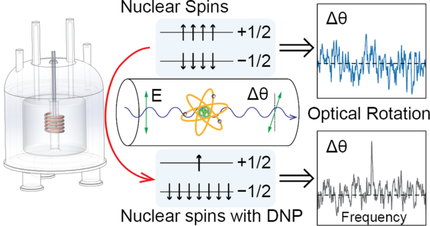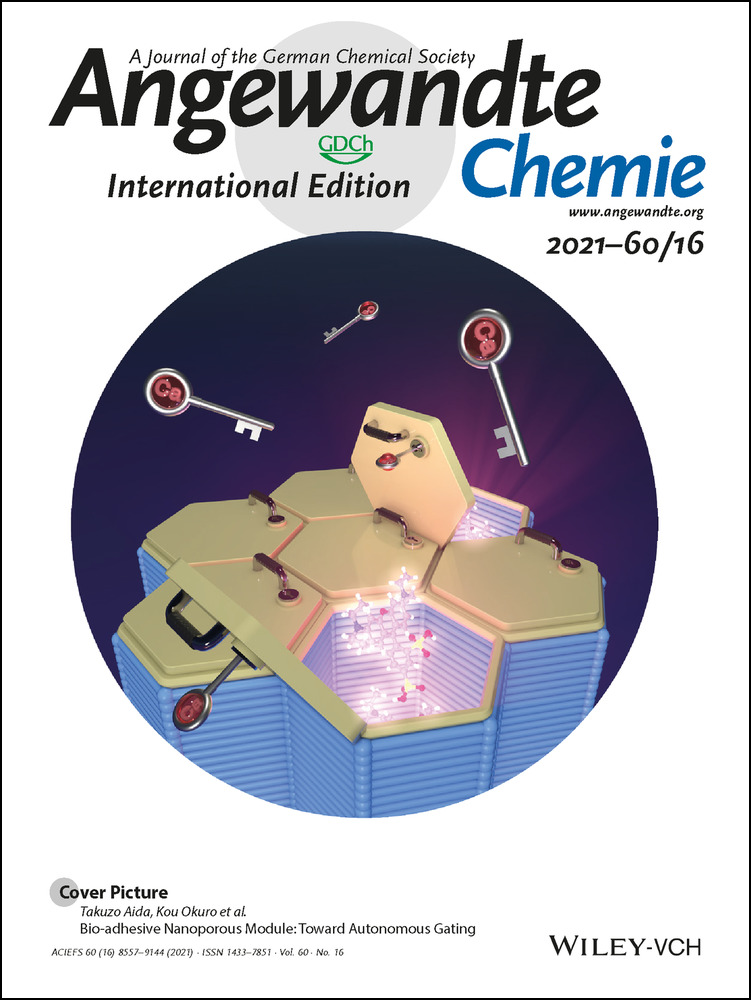Dynamic Nuclear Polarization Enhanced Nuclear Spin Optical Rotation
Graphical Abstract
Nuclear spin optical rotation (NSOR) signals are enhanced by hyperpolarization of nuclear spins using dissolution dynamic nuclear polarization. The signal enhancement leads to the measurement of the NSOR constant of dimethyl sulfoxide. A spectroscopy based on hyperpolarized NSOR offers the possibility to provide information on ground and excited electronic states in molecules, localized to an NMR-addressable site.
Abstract
Nuclear spin optical rotation (NSOR) has been investigated as a magneto-optical effect, which holds the potential for applications, including hybrid optical-nuclear magnetic resonance (NMR) spectroscopy and gradientless imaging. The intrinsic nature of NSOR renders its detection relatively insensitive, which has prevented it moving from a proof of concept to a method supporting chemical characterizations. In this work, the dissolution dynamic nuclear polarization technique is introduced to provide nuclear spin polarization, increasing the signal-to-noise ratio by several thousand times. NSOR signals of 1H and 19F nuclei are observed in a single scan for diluted compounds, which has made this effect suitable for the determination of electronic transitions from a specific nucleus in a large molecule.





